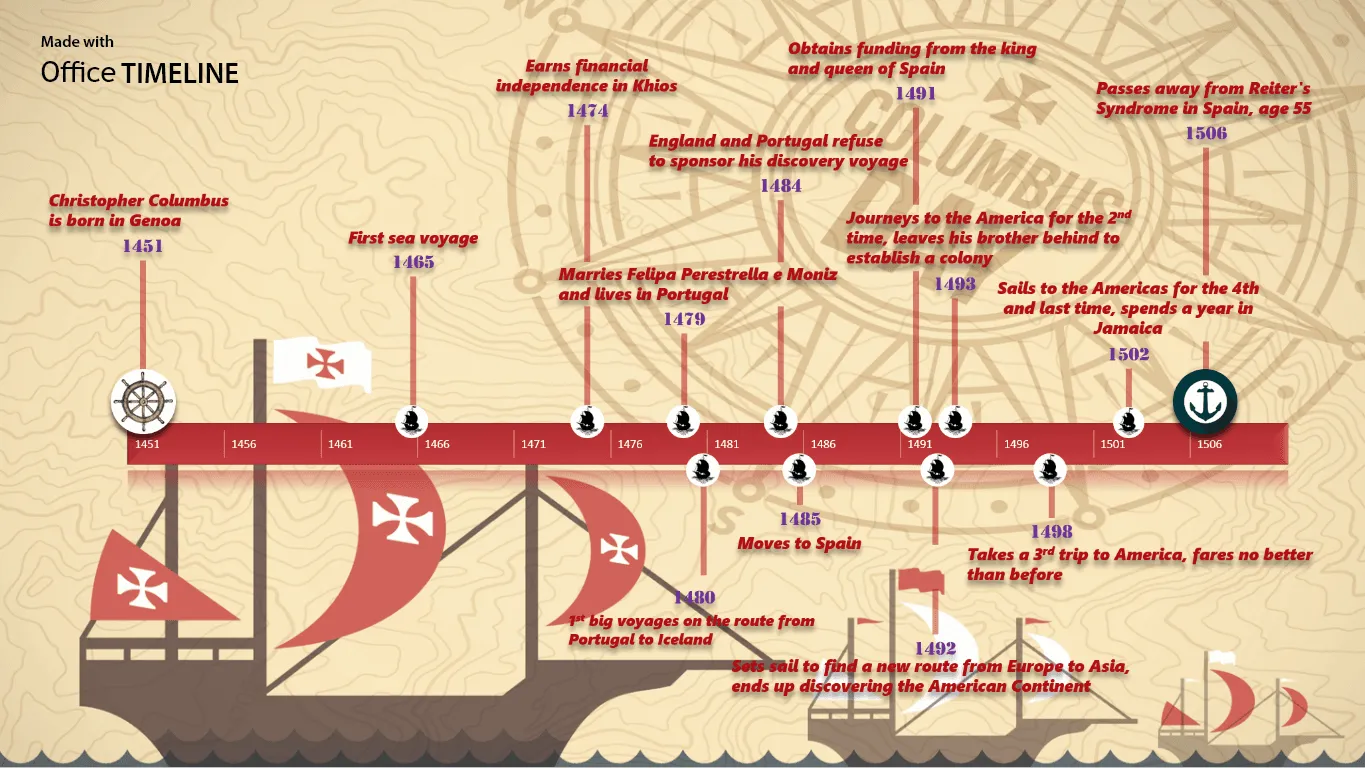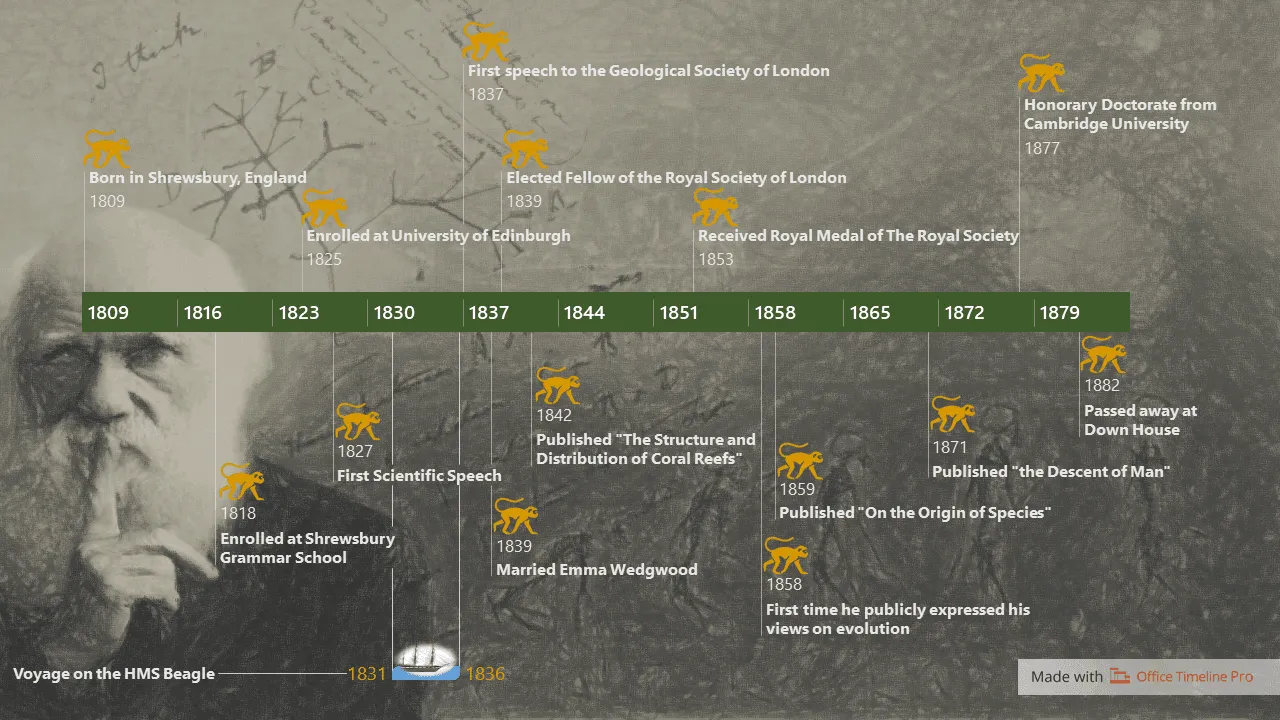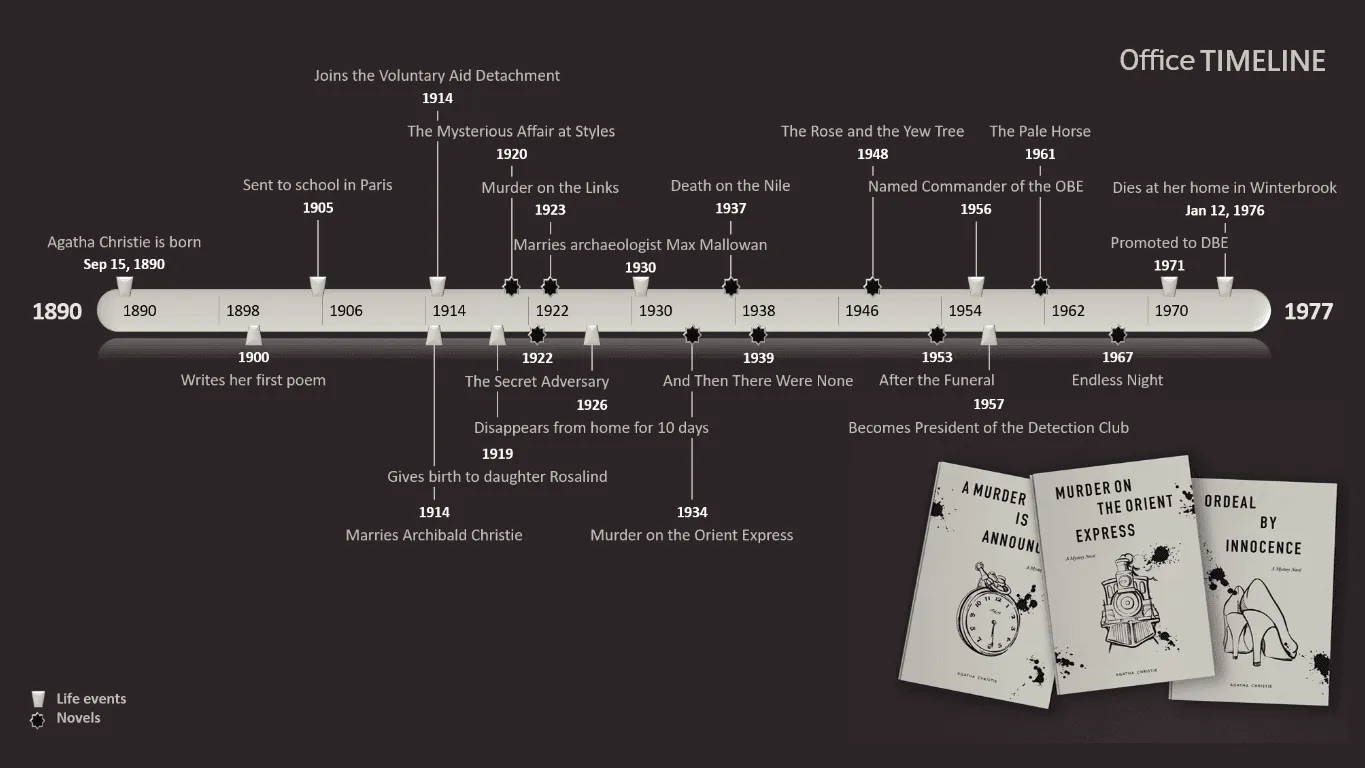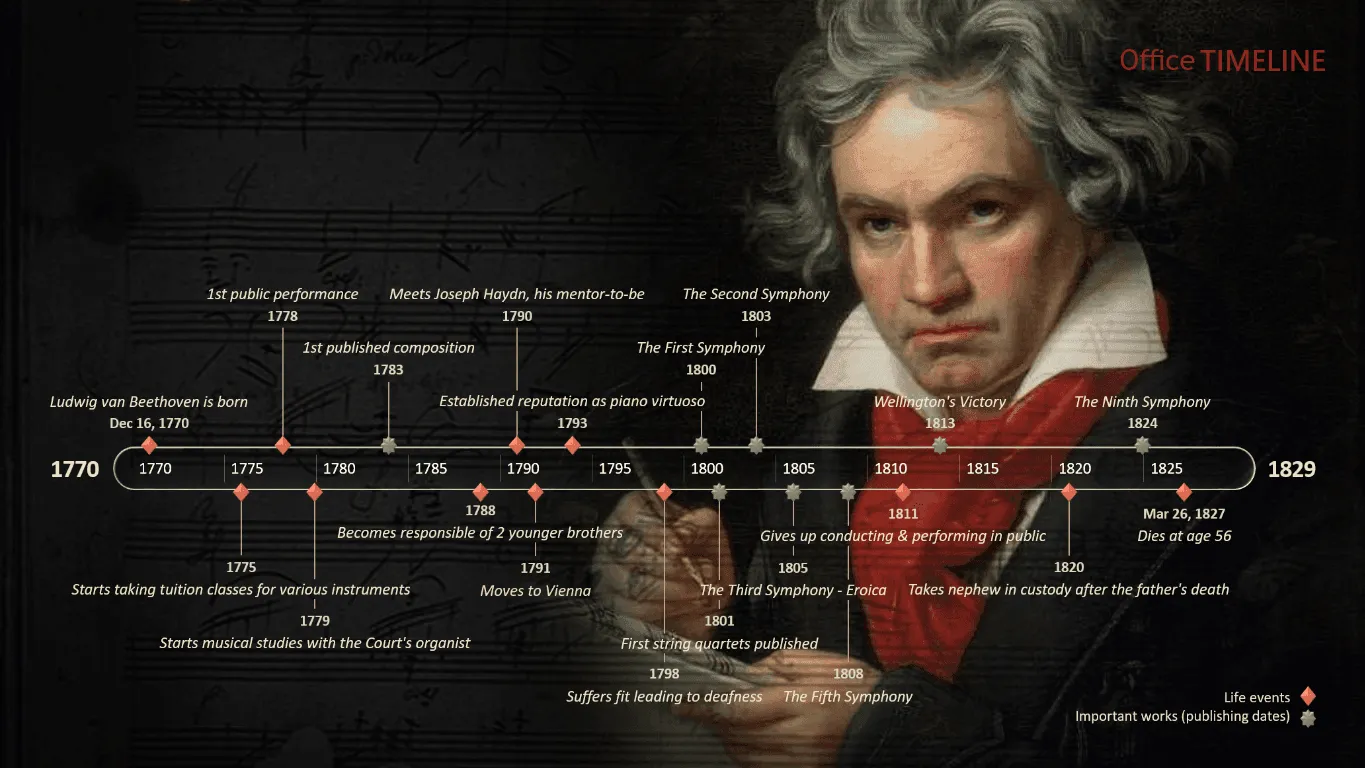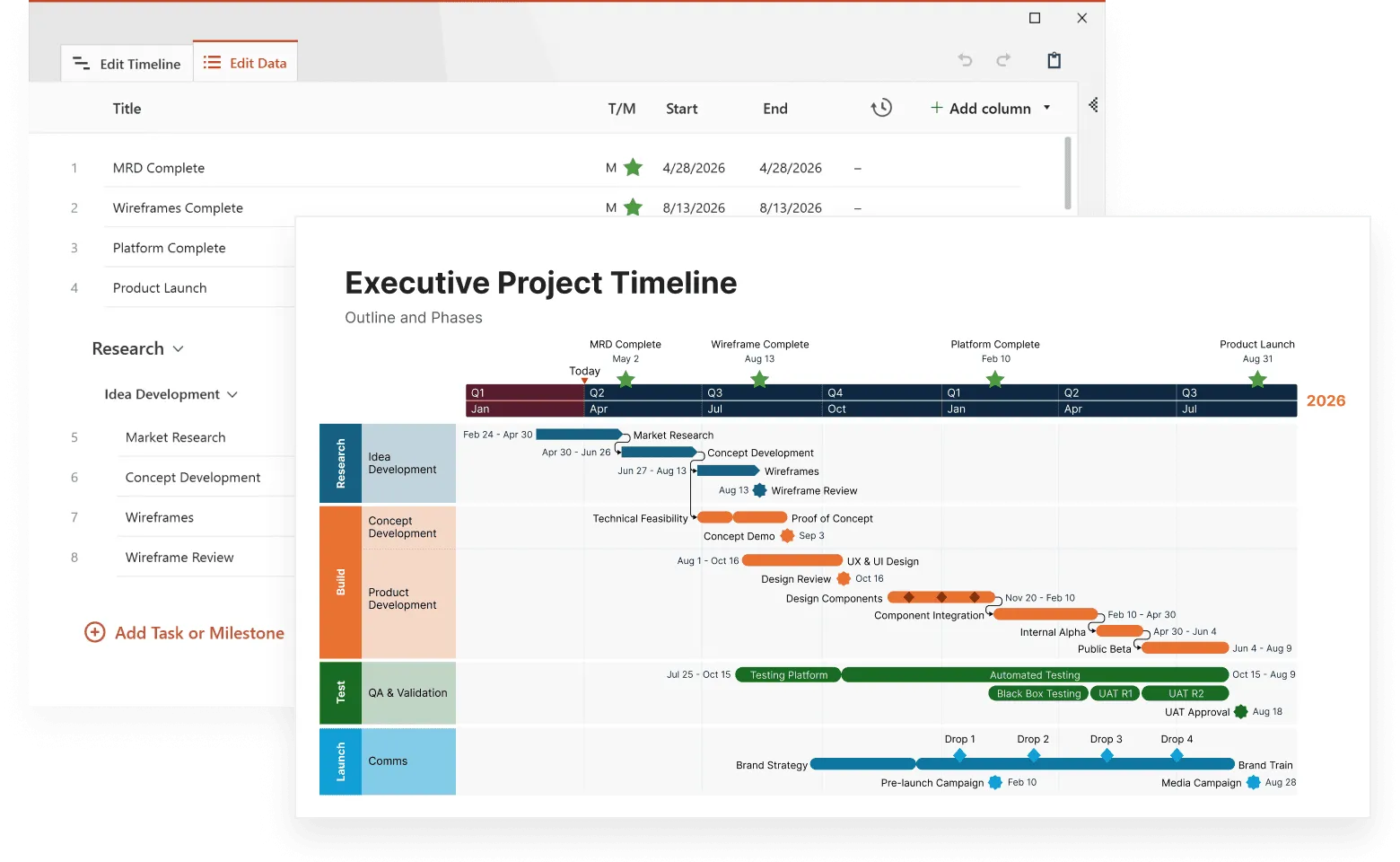Educational timelines transform sequences of events into clear chronological displays that students can easily understand. These visual representations help students have a more complete picture of when events happened and also how they connect to each other across time periods.
Visual learning has become increasingly important in education, and timelines are particularly good examples of this approach. They work well for students who learn better through visual information, while also helping all students organize historical or sequential information.
The clear structure of a timeline allows students to see patterns and relationships that might be missed in text-only presentations. Also, creating timelines involves active learning. Students must analyze data, identify key events, and place them in the correct order. This process requires synthesis and interpretation, which strengthens critical thinking skills.
Timelines are not limited to history. They are used in science to show the stages of a process, in literature to map plot developments, and in other fields to organize data. The visual format clarifies relationships between events and supports the development of conceptual understanding.
This article examines how timelines improve teaching and learning, both in history classes and in other subjects. From simple paper-based timelines to new digital versions, these tools continue to evolve while maintaining their basic function: showing how events unfold over time in ways that students can understand and remember.
For more on how timelines are used across history, projects, education, and personal planning, see our introduction to timelines.
The benefits of timelines for visual learning and historical understanding
Imagine trying to assemble a puzzle without knowing the order of the pieces. Timelines provide that order, transforming a jumble of data into a visual narrative. This narrative helps learners see the progression of events, much like watching a story unfold.
By placing events in a linear framework, timelines make chronology tangible. Students don't just memorize dates; they see the 'when' in relation to the 'what,' building a coherent understanding of how events connect across time.
Historical timelines go further by displaying cause-and-effect connections. They show how events relate within a historical context, and provide a deep understanding of the factors that shaped the past.
Students use these timelines to identify patterns and trends over time - the rise and fall of empires, the recurrence of social movements. This shifts history learning from a collection of disconnected events to a meaningful, cohesive narrative that highlights connections and causes.
The use of timelines extends beyond the history classroom. In science, they illustrate the steps in a scientific process or the order of discoveries. In literature, they map the progression of a plot or the evolution of a character. Across subjects, timelines organize complex data. This organization supports the formation of conceptual models, which allows students to grasp intricate relationships between different pieces of information.
The process of building timelines involves active learning. Students take active part in organizing the information, rather than passively receiving it. They must analyze data, combine information from various sources, interpret its meaning and make critical judgments about what fits and what doesn't.
This process of analysis and synthesis sharpens their thinking and teaches them to weigh evidence and construct logical arguments. They learn to see information not as static facts, but as dynamic elements that interact and influence each other.
Practical applications of educational timelines in the classroom
Educational timelines serve multiple purposes across different subjects, adapting to various teaching needs while maintaining their main function of organizing information chronologically.
Historical timelines
To understand history, you need to see it unfold. Timelines offer that perspective, making history unfold through interconnected events, providing a visual framework for these connections.
Consider World War II. A well-constructed timeline could illustrate the relationship between battles in Europe and events in the Pacific to create a comprehensive understanding, one that separate lessons may not achieve. Similarly, timelines of ancient civilizations would enable students to compare developments across cultures.
For example, they can observe the simultaneous growth of Egyptian dynasties and Mesopotamian societies, noting their shared timelines. Or they can see the period of exploration and colonization take shape through the expeditions of explorers like Christopher Columbus.
This timeline, for example, places Columbus’ voyages within the broader context of political ambitions and maritime advancements of the time. It charts his expeditions and connects them to the decisions of European monarchs, rival explorations, and their lasting impact on the world.
By visualizing these events in sequence, timelines reveal how history is shaped by a series of interconnected actions rather than isolated moments.
Color-coding can enhance the information presented on historical timelines. Teachers use this technique to differentiate between political, cultural, and technological developments. The visual separation allows students to recognize patterns.
For example, they may observe that artistic movements frequently emerge alongside periods of economic growth, or that technological advancements often precede major social changes.
Timelines also include images, maps, and brief descriptions - elements that add detail. The combination of visual and textual data strengthens the student's ability to analyze and interpret historical data, making the past more accessible.
Create better teaching timelines
Try Office Timeline for free. Build clean, organized visuals for your next lesson in minutes.
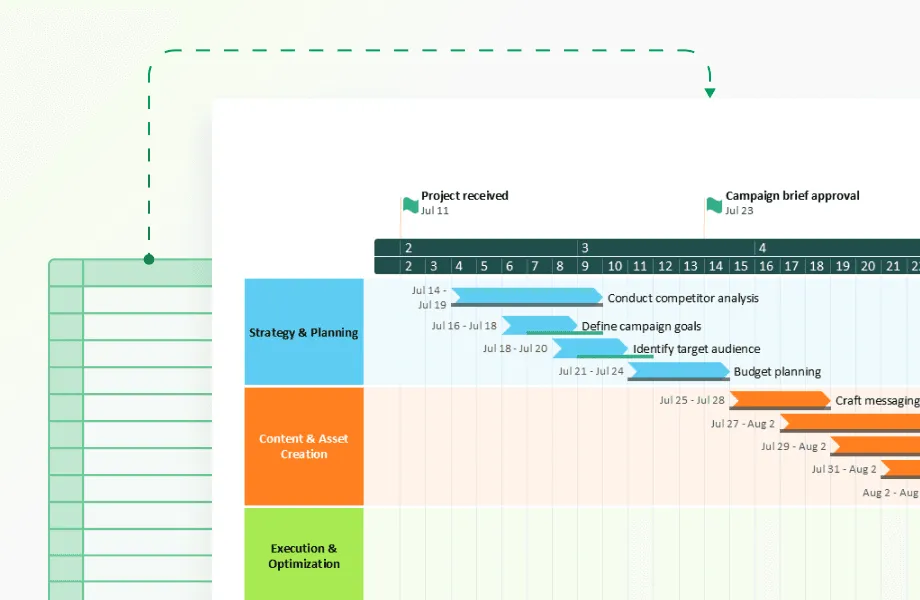
Science applications
Science teachers use timelines to represent processes that occur over extended periods. Geological timelines, displaying the Earth's 4.5-billion-year history, present a scale of time beyond common human experience. These timelines show the sequence of major geological events, such as the formation of continents and the appearance of different life forms.
Students gain a better understanding of the planet's gradual changes, making concepts like plate tectonics and mass extinctions easier to grasp. Evolution timelines illustrate the development of species, showing how organisms change over generations. This visual representation allows students to trace the lineage of life and observe the gradual accumulation of adaptations.
Timelines also clarify the history of scientific discovery. By placing scientific breakthroughs in chronological order, students see the progression of knowledge. For example, a timeline can show how Newton's laws of motion laid the groundwork for Einstein's theories of relativity. It can also show the earlier work of scientists that influenced Newton.
This format clarifies that scientific knowledge develops through the contributions of many individuals, each building upon the work of those who came before. This visual representation helps students understand that scientific progress is a cumulative process, not just isolated discoveries.
The timeline of Charles Darwin’s life serves as an excellent example of how scientific discovery unfolds over time. By mapping key events - his education, the HMS Beagle voyage, and the publication of On the Origin of Species - the timeline visually demonstrates how his ideas on evolution developed.
It also highlights the gradual nature of scientific progress, showing how his observations and publications built upon one another. Just as geological timelines help students grasp Earth's long history, timelines of scientists’ lives illustrate how groundbreaking theories emerge over decades, shaped by research, debate, and collaboration.
Literature and arts
English teachers use timelines to track narrative structures in complex novels. A timeline of events in “To Kill a Mockingbird” or “The Odyssey” helps students follow non-linear storytelling. These timelines show how plot points connect, even when presented out of order in the text. Students can trace character development and identify recurring themes. Author timelines show how writers’ works connect to events in their lives or to broader literary movements.
For example, this timeline of Agatha Christie's life and works illustrates how her personal experiences influenced her writing. Her time as a nurse during World War I, for instance, likely contributed to the medical accuracy in her crime stories. The timeline also highlights key moments in her literary career, such as the publication of Murder on the Orient Express and And Then There Were None, alongside major life events.
By visually organizing these details, timelines help students and readers see connections between an author’s life and their creative output, deepening their understanding of literature and historical context.
Music teachers use timelines to show the progression of musical periods. A timeline spanning Baroque, Classical, and Romantic eras helps students hear stylistic changes in historical context. Students can see how musical forms and instrumentation evolved, and how composers responded to social and cultural shifts.
Art teachers use timelines to place artistic movements in their social and historical settings. A timeline showing the development of Impressionism, for example, illustrates how artists reacted to the changing urban landscape and the rise of new technologies. It helps students understand that artistic styles are not isolated creations, but rather responses to the world around them.
To illustrate the application of timelines in music education, consider the example of Ludwig van Beethoven. A timeline of his life and works visually represents the progression of his career within the Classical and early Romantic periods. It shows key events, such as his birth in 1770, his meeting with Joseph Haydn, and the premieres of his symphonies.
Such a timeline provides a chronological framework and also allows students to see the relationship between Beethoven's personal life, his musical development, and the broader historical context. The inclusion of significant compositions alongside life events provides a comprehensive view of his impact on musical history.
Conclusion: timelines as practical tools for teaching
The success of educational timelines comes from how they match our thinking processes, especially our natural tendency to organize information in order of time.
Research supports the value of timeline-based instruction. In a study published in the Journal of Educational Psychology, two scholars, Richard Mayer and Richard Anderson, found that students who learned with visual representations that showed time-based relationships demonstrated significantly better problem-solving transfer compared to students who received verbal explanations alone. Their research on multimedia learning principles has been foundational in understanding how visual sequencing aids comprehension.
The versatility of timelines extends beyond their traditional applications. Modern educators have adapted timeline concepts for:
- Problem-solving sequences in mathematics
- Language acquisition stages in foreign language instruction
- Personal goal-setting in student development programs
- Project management in collaborative assignments
What makes timelines particularly effective is their dual nature as both information delivery systems and analytical tools. When students create or interact with timelines, they practice information evaluation, pattern recognition, and cause-effect analysis—skills that transfer to other academic disciplines and real-world applications.
Digital innovations have expanded timeline capabilities without diminishing their fundamental purpose. The best digital timeline makers don't simply add bells and whistles but enhance the core functions: showing relationships between events, illustrating the passage of time, and contextualizing individual moments within broader developments.
Educators looking to improve student engagement and comprehension would do well to incorporate timelines into their instructional approaches. Whether simple paper versions or sophisticated digital tools, timelines continue to bridge the gap between isolated facts and meaningful understanding, making them indispensable components of effective visual learning.
Frequently asked questions
Timelines uniquely present information in chronological sequence, making them especially suited for showing relationships between events over time. Unlike concept maps or diagrams that may focus on hierarchical relationships, timelines specifically highlight temporal progression and help students understand historical context.
Timelines work well in literature (plotting narrative events), science (showing evolutionary or geological processes), language learning (tracking language development stages), and project management (visualizing task sequences). The key is identifying any information with a chronological component that benefits from visual sequencing.
The appropriate complexity depends on student age and learning objectives. Elementary timelines should include 5-10 key events with simple labels. Middle school timelines can incorporate 10-15 events with brief descriptions. High school and college timelines can feature multiple parallel tracks and more detailed annotations. Always prioritize clarity over comprehensiveness.
Digital timeline tools offer several advantages: they can be easily updated, incorporate multimedia elements (videos, audio, links), allow zooming between time scales, enable collaborative editing, and can be shared electronically. However, physical timelines provide tangible learning experiences and can remain permanently visible in classrooms without requiring device access.
Effective assessment considers accuracy of chronology, selection of significant events, visual clarity, and analytical connections between events. Use rubrics that balance these elements based on your learning objectives. Consider having students explain their design choices and what patterns they identified during creation, as the process often yields as much learning as the product itself.


